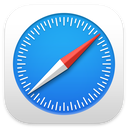Learn to Animate Cartoons!
In this course, you will learn about the history of animation and briefly explore the common types of animation that are featured on television and in movies. You will discover that no matter what type of animation it is, a good animation depends on good planning. Throughout the course, you will be engaging in techniques used by professional animators and will be using the web-based tool StoryboardThat to create storyboards for your own animations. You will also be introduced to a mobile-based app called Toontastic 3D, where you can create engaging 3D animations using your storyboards as a blueprint.
Learning Outcomes
Method of Instruction
This course is intended for instructor delivery, either in-person or remotely. All instructional resources (lesson slide, handouts, quizzes, assessments, etc) can be downloaded for individual teacher customization and use. Should you have any questions regarding the curriculum, please do not hesitate to contact Digital Media Academy Support through the LMS.
Teacher Guide
The Teacher Guide contains all information required to deliver this Digital Media Academy Foundations course.
Curricular Connections Guide
Science, Language Arts, and Math curriculum integrations build student competency in core academic subjects while addressing essential, 21st-century technology skills. This Curricular Connections Guide is designed to spark your imagination of how to bring this course to life in your own classroom.
Standards Alignment
This course is aligned to national and international standards for technology education. Standards include: International Society for Technology in Education (ISTE), International Baccalaureate , UK National Curriculum, New Zealand Curriculum, and more!
Required Materials & Equipment
- A Computer with Internet access
- Digital or Paper notebook or sketchbook
- A mobile device (Android/iOS) with Toontastic 3D installed
Career Pathways
Animator, 3D Modeler, Art Director, Film and Video Editor, Graphic Designer, Video Game Designer, Animation Director, Cartoonist, Concept Artist, Director, Effects Animator, Forensic Animator, Filmmaker, Storyboard Artist, Software Publisher, Computer Systems Designer, Advertising Services, Public Relation Services, Specialized Design Services
Here is the course outline:
Getting StartedRead me first. 1 section
|
|
|
Teacher ResourceCovering course description, learning outcomes, teacher guide, requirement materials and equipment, career pathways, and standards alignment 15 sections
|
|||||||||||||||
|
Module 1: What is Animation?Come learn about basics of animation! 2 sections
|
||
|
Module 2: What is Storyboarding?Come learn about what storyboarding is and why it is an important part of creating an animation! 5 sections
|
|||||
|
Module 3: Let's Create a Digital Storyboard!Learn how to create your own digital storyboard using an online tool. 6 sections
|
||||||
|
Module 4: From Storyboarding to AnimationFrom the storyboard you came up with, create an animation using an app on a mobile device. 5 sections
|
|||||
|
Student ShowcaseNow it's time to show off your projects! 2 sections
|
||
|
Completion
The following certificates are awarded when the course is completed:
 |
LSSW Course Completion Certificate |





